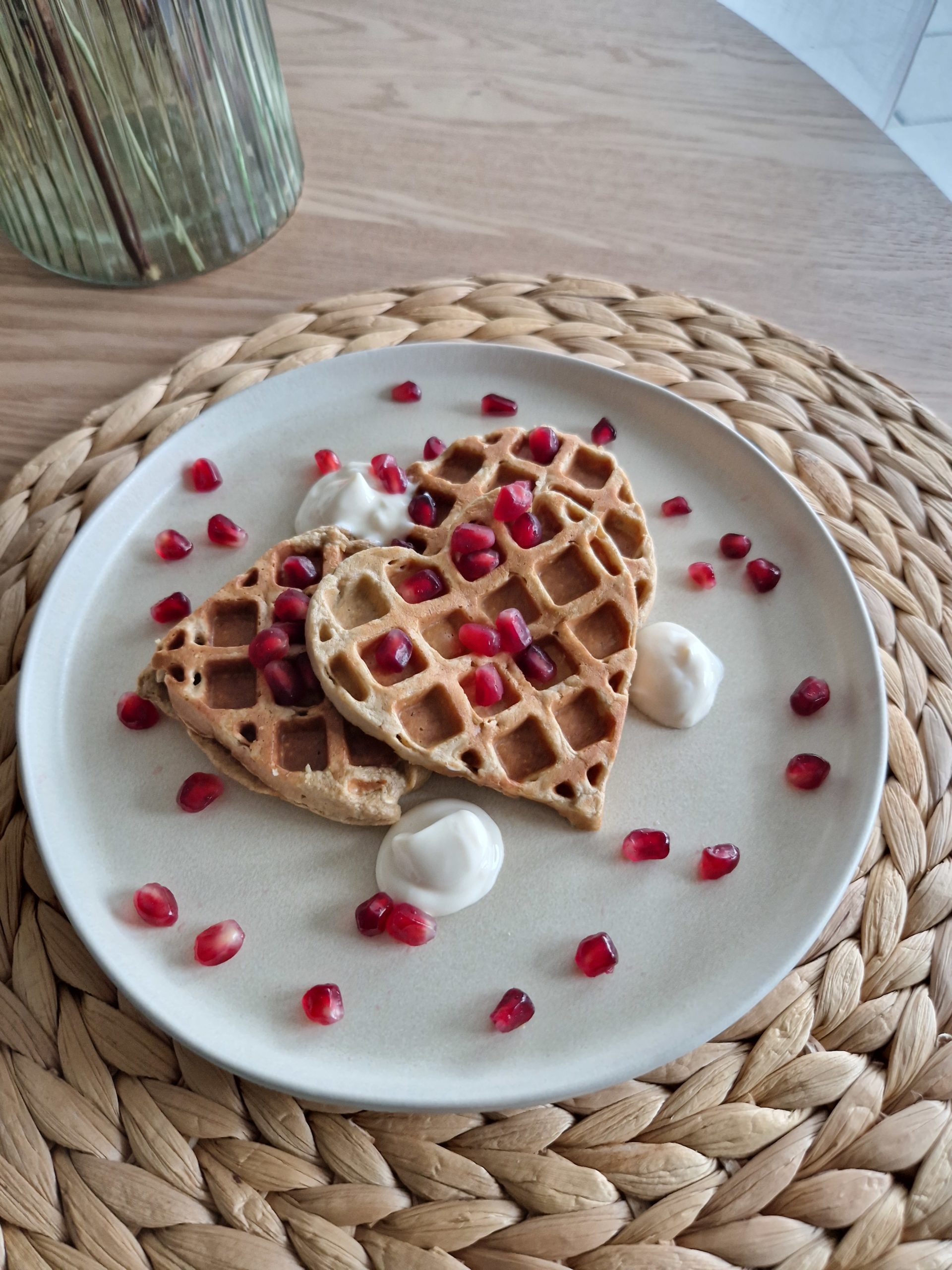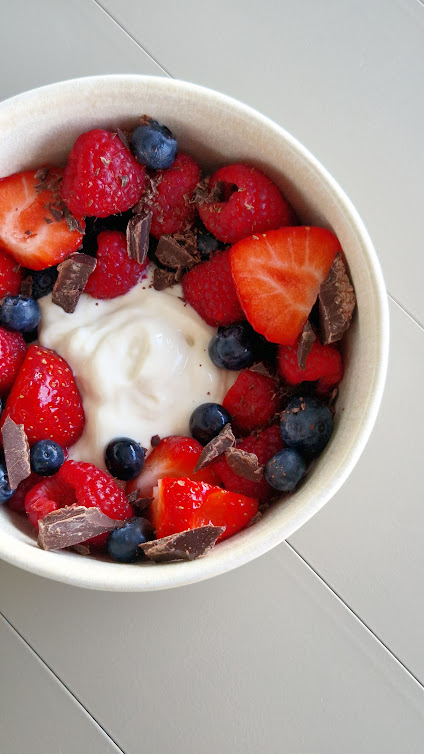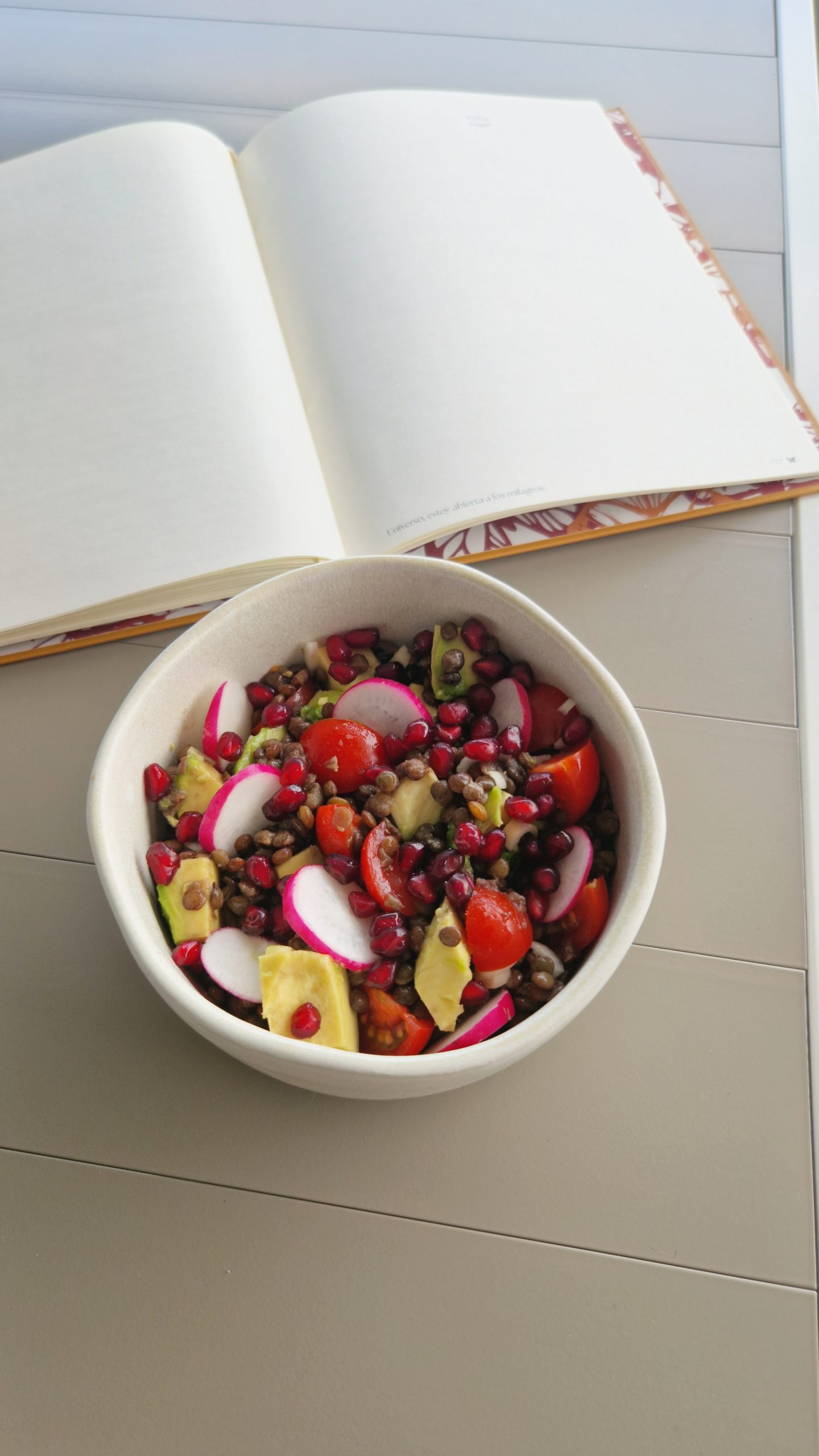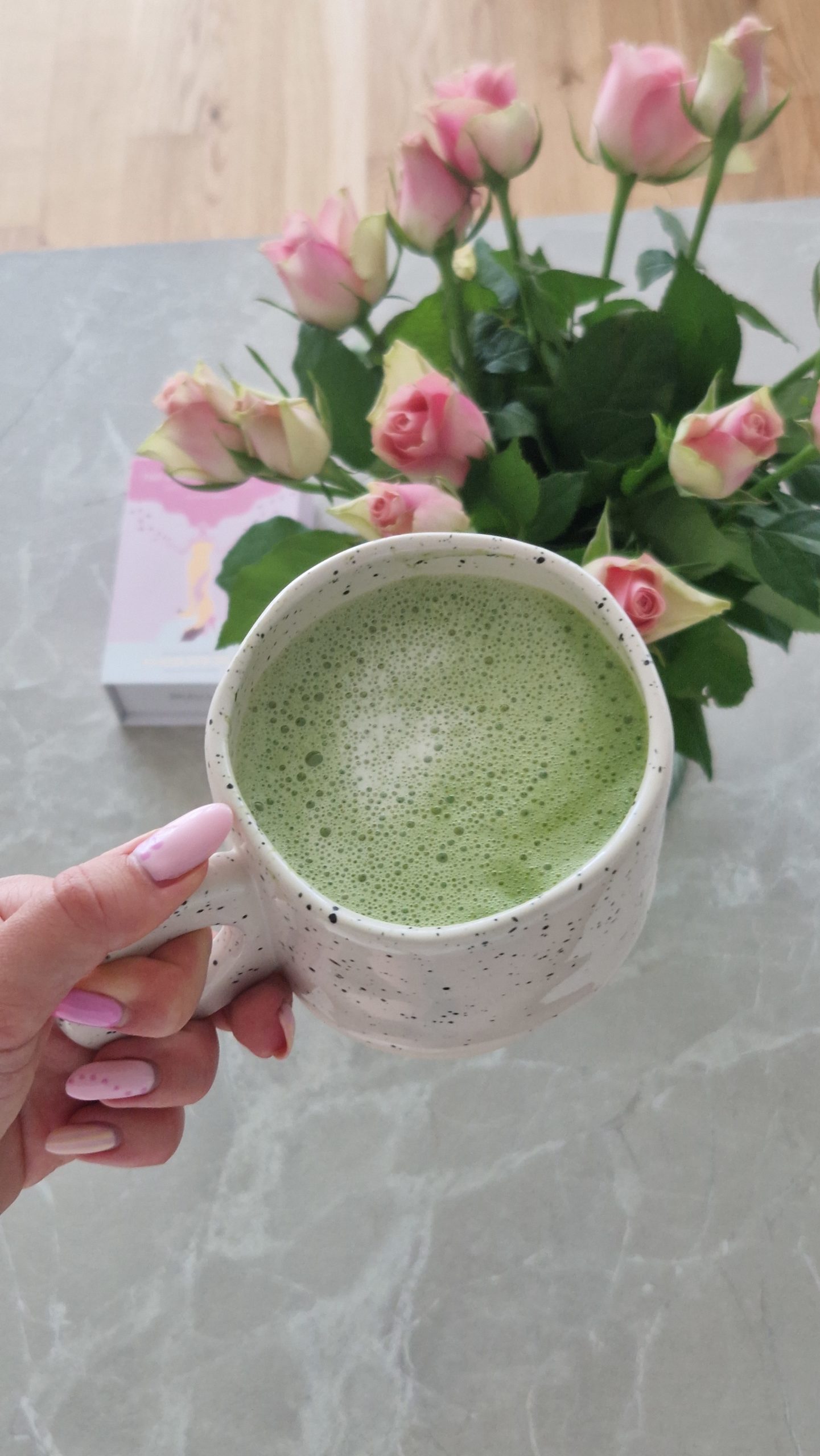If you’re looking to heal your hormonal symptoms naturally, you’ve come to the right place.
In this article, I’ll show you how to eat for your cycle to balance your hormones and soothe your symptoms naturally.
This approach is based on cycle syncing, a lifestyle that involves adapting your diet, workouts, and activities to your cycle’s phases.
What is Cycle Syncing and How Can It Help You?
If you’ve never heard of cycle syncing, you might be wondering what this “trend” is all about and how it could possibly benefit you.
The truth is, it can benefit you enormously, especially if you have a hormonal imbalance and symptoms related to your cycle like:
- Premenstrual Syndrome (PMS)
- Period pain
- Hormonal acne
- Mood swings
- Cravings before your period
- Amenorrhea (absence of periods)
- Irregular cycles
- Infertility related to ovulation
If you’re already a bit familiar with your cycle, you probably know that, unless you’re on hormonal birth control, your cycle goes through four different phases each month.
If you’re not sure what I’m talking about, I encourage you to read this article where I explain everything you need to know.
So, in each phase—and therefore, each week—different things are happening in our bodies. Various processes activate to produce different hormones, then eliminate them once they’re no longer needed.
When we have hormonal imbalances, and all those uncomfortable symptoms that come with them, it’s a sign that one or more of these processes aren’t working properly.
This means we’re either not producing enough hormones, or we’re not eliminating them efficiently.
The magic of food is that it’s here to help ensure each process works smoothly.
However, it’s sometimes not enough to just eat a balanced diet. We need to give our bodies the nutrients they need at the right time.
I know it might seem pretty complicated to adapt your diet every single week, but I’m here to share the tips I use myself (and that actually work!).
A Lifestyle, Not a Diet
Before I explain how this works practically and what types of food you need during each phase, I want to give you a disclaimer: this is not a diet.
This is a method, a lifestyle. The question here isn’t how much we eat, but what we eat and when.
The problem with traditional diets is that they tell us the exact opposite.
We’re told we need to control our bodies because they’re unpredictable, and we can’t count on them if we give them too much freedom.
Diets tell us we need to restrict calories, ignore our hunger cues, and reduce or even eliminate certain food groups, especially carbs and fats.
But what we’re not told is that when our bodies don’t get enough food, including complex carbohydrates and healthy fats, they can’t produce the hormones necessary for:
- us to feel good throughout our cycle
- us to lose weight
- us to get pregnant
When we don’t eat enough, and on top of that, we exercise a lot or very intensely because that’s what we’re told we *should* do, our bodies enter a state of stress because we’re depleting their resources.
So, if your body is under stress, before it tries to lose weight or balance your hormones, it’s first going to try to survive.
Among other things, it will store fat because it thinks it won’t receive enough food, and it produces cortisol to manage its stress levels.
The body is incredibly intelligent.
Eating enough, in a way that supports your cycle and hormones, will help your body manage this stress, stay nourished, feel safe, and be in the best condition—whether that’s for having energy, losing fat, or getting pregnant.
Our body is like a hormone factory, and proteins, carbohydrates, and fats are the raw materials.
If we don’t have enough of these three raw materials, our body can’t produce hormones, and it sounds the alarm.
Restrictive diets actually hinder us as women.
They sell us a dream, but in reality, they prevent us from achieving our goals, whether that’s improving our physique or having children.
And it’s wild to know that the majority of women have tried these kinds of diets at least once in their lives, myself included, because that’s what we think we have to do as women to be enough and to feel good in our bodies.
The really good news is that it doesn’t have to be this way.
And I hope you realize here that even if you think you’re doing well by depriving yourself of certain foods or food groups, that might actually be what’s causing your cycle-related symptoms, your acne, your inability to lose weight, or your difficulty conceiving.
Because our hormones play a huge role in our lives.
Many doctors tend to prescribe the pill to silence these hormones.
Many doctors still tend to minimize our symptoms and make us believe we’re crazy.
We’re told we should just take painkillers and accept that’s what it means to be a woman.
Without being told that food can help us reduce or even eliminate these symptoms.
The Impact of Diet on Your Hormonal Cycle
Having a balanced diet that’s tailored to your cycle can completely change how you feel throughout the month. It can even help you conceive or lose weight, if that’s what you’re looking for.
And I’m not the only one saying this:
- A study from 2005 by the Archives of Internal Medicine found that a diet rich in calcium and vitamin D can lower the risk of PMS.
- When it comes to fertility, a study published in Human Reproduction noted that eating a lot of fast food is linked to a longer time to conceive and a higher risk of infertility.
- Another study found that women who followed a diet prioritizing healthy fats, plant proteins, low-glycemic carbohydrates, whole-fat dairy, and multivitamins had up to a 66% lower risk of ovulation-related infertility.
Of course, you always have to be careful with studies because there are so many factors at play. But I think this already gives us a good idea of how important diet is for our cycle and hormones.
In any case, what truly matters here is you: your cycle, your body, your lifestyle.
No matter what the studies say, you always have to test things out and see what works best for *you*.
I can confirm that cycle syncing, which includes adapting my diet to my cycle, has worked for me.
Cycle syncing is what allowed me to heal my hormonal acne long-term and no longer suffer every month from PMS or period pain.
And I hate that no doctor talks about this, or that we’re simply prescribed the pill when it doesn’t address any of these root issues.
That’s why I’m so passionate about this topic, and I’m here to share everything I know with you.
Quick note: If you have or suspect you have a condition like PCOS or endometriosis, you might need additional support. However, adapting your diet to your cycle phases will still help, as most of these conditions are connected to hormonal imbalances.
How to Eat For Your Cycle
Before I give you practical tips on how to eat for each phase, it’s important to understand that this isn’t a diet or a restrictive eating plan, but a lifestyle.
The idea here isn’t to restrict your calories, but to ensure that you’re eating the right foods at the right time.
Traditional diets push us to cut calories, eliminate certain foods like carbs and fats, and tell us we need to control everything.
However, when you don’t adequately nourish your body, you prevent the production of hormones essential for your well-being.
By supporting your body with the right nutrients during each phase of your cycle, you help it feel secure, manage stress better, and be in the best condition—whether that’s for losing weight, having energy, or even conceiving.
What to Eat on Menstrual Phase
The menstrual phase kicks off on day one of your period and typically lasts between 3 to 7 days. This is when our hormone levels are at their lowest (and so is our energy!).
The goal during this phase is to reduce inflammation, refuel our energy, and make up for the loss of iron and nutrients from menstrual bleeding.
- Pork, sardines, and seafood, rich in iron, help compensate for blood loss and ward off fatigue.
- Blueberries, blackberries, and kale, packed with antioxidants, improve circulation and cut down on inflammation.
- Turmeric and miso, with their anti-inflammatory properties, are great for easing menstrual pain.
- Sunflower seeds and buckwheat, high in magnesium, promote muscle relaxation and reduce cramps.
- Wild rice and root vegetables, sources of steady energy, help prevent fatigue and keep blood sugar balanced.
What to Eat on Follicular Phase
This phase lasts about 7 to 10 days. It’s when your energy levels really start to climb back up.
The main goal during this phase is to support adequate estrogen production.
- Eggs, poultry, and trout, rich in protein and choline, support hormone production and energy.
- Flax seeds and pumpkin seeds, rich in lignans and zinc, help modulate estrogen and prepare for ovulation.
- Broccoli, artichoke, and parsley, with their detoxifying properties, support the liver in eliminating estrogens.
- Citrus fruits, pomegranate, and lychee, high in vitamin C and antioxidants, stimulate ovulation and protect cells.
- Oats, rye, and barley, rich in complex carbohydrates, provide stable energy and support metabolism.
- Kimchi, sauerkraut, and vinegar, packed with natural probiotics, promote a balanced gut microbiome and better nutrient absorption.

oat waffles with pomegranate
What to Eat on Ovulatory Phase
Ovulation itself only lasts one day, but we’re fertile for about 3 to 5 days around it.
During this phase, estrogen levels hit their peak, and your energy is at its highest.
The goal for this phase is to prevent excessive estrogen buildup, which can lead to symptoms like hormonal acne.
- Seafood and sardines, rich in zinc and omega-3s, support ovulation by improving follicle quality.
- Flax seeds and pumpkin seeds, sources of lignans and minerals, promote hormonal balance by regulating estrogen and supporting hormone production.
- Red bell peppers, guava, and strawberries, high in vitamin C, boost iron absorption and help maintain adequate progesterone levels after ovulation.
- Amaranth, corn, and quinoa, rich in complex carbohydrates, support hormone production and provide sustained energy crucial for ovulation.
- Kimchi and turmeric, with their anti-inflammatory and probiotic properties, promote good digestion and the elimination of excess estrogen for optimal hormonal balance.
- Dark chocolate, pistachios, and pecans, sources of magnesium, help reduce stress and regulate hormones, thus preventing imbalances that could disrupt ovulation.

yoghurt and berries with dark chocolate
What to Eat in Luteal Phase
Finally, there’s the luteal phase, lasting between 12 and 16 days. During this period, your metabolism speeds up, and you might feel hungrier. This is totally normal, and you shouldn’t restrict yourself.
This is the phase where your body prepares for a potential pregnancy, and it’s important to sufficiently nourish your body.
The goal for this phase is to support progesterone production and reduce inflammation.
- Salmon, shrimp, and tuna, rich in omega-3s and protein, support progesterone production and reduce inflammation.
- Sunflower and sesame seeds, sources of vitamin E and lignans, promote good hormonal balance and support progesterone production during the luteal phase.
- Sweet potato, squash, and red lentils, rich in complex carbohydrates and fiber, stabilize blood sugar and prevent cravings linked to hormonal fluctuations.
- Banana, pineapple, and mango, natural sources of vitamin B6, help reduce irritability and improve mood at the end of your cycle.
- Walnuts and pine nuts, rich in fatty acids and magnesium, help relax muscles and reduce premenstrual tension.
- Cabbage, celery, and radishes, rich in antioxidants and fiber, facilitate the elimination of excess estrogen and reduce water retention.
- Garlic, onion, and ginger, with their anti-inflammatory properties, help reduce inflammation linked to premenstrual syndrome.

lentil salad and journaling – a perfect combo
Important Note
What’s really important to understand is that you shouldn’t just adapt your diet in the phase(s) where you have symptoms.
That’s because eating according to your menstrual cycle and its phases will not only help the current phase go smoothly, but it will also contribute to the success of the following phases.
For instance, the ovulatory phase is directly linked to both the luteal and menstrual phases.
If your ovulatory phase doesn’t go well because your body doesn’t have what it needs to produce enough hormones, it could impact your PMS or the length of your cycle.
Similarly, if you don’t eat the necessary foods during your luteal and menstrual phases, it can also negatively affect the start of your next cycle.
You might not feel as energized as you should, even though that’s precisely when you’re supposed to feel your most vital. Everything is connected.
In addition to the phases being interconnected, our hormones and cycle well-being are also linked to all our body’s systems: our brain, immune system, metabolism, microbiome, and stress levels.
Eating according to your phases and having balanced hormones isn’t just about healing symptoms and being fertile.
It’s also about being healthy and at the top of our game to achieve our dreams, to have incredible careers, to be amazing mothers, partners, sisters, and friends.
For example, having a good balance of estrogen helps us with memory, learning, and boosts our mood.
But if we have too much estrogen because our body can’t eliminate it, it can make you anxious or put you in a state of mental fog during the luteal phase.
Another example is that certain foods can increase your cortisol and, therefore, your stress levels, especially during the luteal phase.
The second part of the luteal phase and the menstrual phase are when our bodies are more sensitive to stress and thus reach their limits faster.
What you need to know is that cortisol interferes with progesterone.
This means that when the body reaches a certain level of stress, it will prioritize cortisol production and sideline progesterone.
However, we need progesterone—and enough of it—to have a luteal phase free of symptoms and PMS.
Which brings me to the foods to avoid, particularly during the luteal and menstrual phases.
Foods to Be Mindful Of
Now that we know what we should be eating during each phase, let’s talk about the foods to “avoid.”
When I say “avoid,” I don’t mean you have to eliminate them completely, especially if you enjoy them.
If you follow me for a while, you already know I eat chocolate daily, sometimes drink alcohol, and I adore tiramisu.
But certain foods can worsen inflammation and disrupt hormones, such as:
- coffee,
- refined sugar,
- ultra-processed foods,
- alcohol.
There’s even one study that found a link between alcohol and an increase in estradiol, which can influence hormonal balance.
Ideally, it’s best to limit these foods as much as possible, especially if you’re experiencing hormonal imbalances (PMS, period pain, migraines, etc.).
During the luteal and menstrual phases, your body is more sensitive, so that’s when I personally pay extra attention.
I know it’s often during this time that we crave sugar and fat, due to the drop in estrogen and serotonin (a neurotransmitter that helps regulate mood and appetite).
In the moment, we think these types of foods will make us feel better and satisfy us, but all we’re doing is entering a vicious cycle: a rapid sugar high, a brutal crash, irritability, fatigue… and even more cravings.
That’s why it’s important to eat foods that will naturally boost your serotonin (especially complex carbohydrates and healthy fats like those listed in the guide).
Coffee is also an important topic: it’s deeply ingrained in our daily lives, but it can worsen anxiety, endometriosis, PCOS, and even infertility.
It can also prevent the absorption of certain minerals essential for hormone health.
It’s worth noting that this depends on the quantity and also on our individual tolerance to coffee.
Here, what matters once again is knowing how *you* react to coffee and how you feel when you reduce your caffeine intake.
In my case, reducing coffee intake transformed my anxiety levels and hormonal balance.
I replaced it with matcha, and I can’t live without it now (I barely crave coffee anymore, even though I used to drink it every day!).
As always, the key is to experiment, listen to your body, and observe how you react as you adjust your diet.
If you want to test it out, simply try reducing caffeine, alcohol, and/or refined sugar for a few weeks and see how you feel.

matcha latte with cashew milk : my favourite part of the day
Practical Tips
Here are a few more practical tips I’d like to mention regarding diet and your cycle:
1. You don’t need to change your entire diet to sync with your cycle.
What I’ve found works for me is to add certain foods to what I’m already eating. For example, 90% of my breakfasts are oat-based. That forms my base, and depending on the cycle phase I’m in, I’ll add different fruits, nuts, and seeds.
You can adapt this principle to anything you prepare: sauces with your pasta, curries, soups—everything can be adjusted according to the phase, which makes the process incredibly simple.
I know it might seem daunting at first, but once you start thinking about how to adapt the recipes you already make and add foods to what you’re eating, it becomes much easier. After a while, it even becomes instinctive, and you’ll find yourself naturally craving the foods that are beneficial for the phase you’re in.
2. Eating according to your feminine cycle isn’t about perfection.
Diets often have an all-or-nothing mentality: either you stick to every rule, or you’ve failed. But here, the approach is flexible. The idea is to add foods rather than eliminate them. Adding or modifying just a few foods per phase can already make a big difference.
It’s also not about eating *only* the recommended foods for each phase, nor about stressing over exactly when each phase begins or ends. All the phases are interconnected.
The simplest way, and what I do, is to divide the month into four weeks and assign one week to each phase.
3. Diet is only one part of the equation.
Of course, eating according to your menstrual cycle will help alleviate your symptoms, but you probably won’t heal them 100% if you don’t manage your stress, for example. Why? Because high stress levels prioritize cortisol production at the expense of sex hormones.
Stress includes not eating enough, over-exercising, not managing your emotions, not believing in yourself, or even doing work that doesn’t satisfy you. That’s why I love talking about well-being in a global, holistic way, because everything is connected.
That’s also why I often talk on social media and in my podcast about self-confidence, taking care of your mental health, listening to your intuition, and following your dreams.
Personally, I’m convinced that if we live in fear of what others think, if we don’t dare to express what we believe, or if we’re afraid to take up space, it also affects our hormones.
I truly hope this article has helped you see diet and hormonal balance from a different perspective.
I also hope it has given you renewed hope, by showing you that you can heal your hormonal symptoms naturally and that you don’t have to spend the rest of your life dreading your luteal and menstrual phases <3




